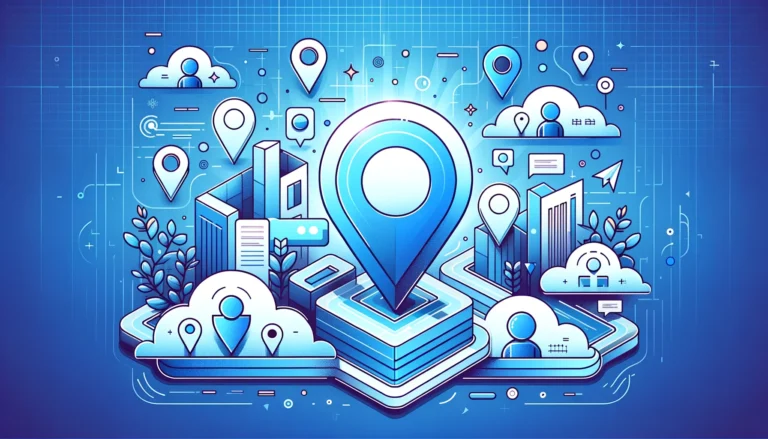Home Office Setup Ideas Business: 5 Inspiring Workspaces
5 Inspiring Home Office Setups That Boost Business Productivity
The shift to remote work has transformed spare bedrooms and kitchen tables into command centers for businesses of all sizes. But not all home offices are created equal. The most productive spaces blend functionality with inspiration, ergonomics with aesthetics, and professional needs with personal style.
TL;DR
- The most productive home offices balance professional functionality with personal comfort
- Ergonomic setups prevent health issues and increase productivity by up to 45%
- Budget-friendly home offices can be created for under $500 with strategic purchases
- Technology integration should prioritize reliability, security, and seamless connectivity
- Maintaining work-life boundaries is essential when your office is in your home
Inspiring Home Office Workspaces for Small Businesses
Working from home doesn’t mean sacrificing professionalism or productivity. In fact, with thoughtful design, your home office can become a powerful business asset that reflects your brand while supporting your workflow.
The most successful home office spaces are those that understand the unique needs of small businesses. Unlike corporate environments, home offices must often serve multiple functions while occupying limited space. This dual-purpose challenge requires creative solutions.
I once visited a graphic designer who transformed a tiny closet into what she called her “inspiration pod.” By removing the door and installing a floating desk and strategic lighting, she created a dedicated workspace that could be completely hidden when not in use. The walls were covered in magnetic paint for displaying client mockups and mood boards. Despite being less than 15 square feet, it was one of the most functional home offices I’ve seen.
The key to an inspiring workspace isn’t endless square footage or expensive furniture—it’s intentionality. Every element should serve your specific business needs. A freelance writer might prioritize a quiet space with minimal distractions, while a product-based business might need integrated storage and packaging stations.
According to workspace safety and productivity experts, natural light increases workplace productivity by up to 15%. If possible, position your desk near a window—not only for the productivity boost but also for the psychological benefits of connecting with the outside world.
What makes home offices truly special are the personal touches that would be impossible in a corporate setting. One entrepreneur I know displays her collection of vintage typewriters as both decoration and motivation—a reminder of how far communication technology has evolved.
Budget-Friendly Setup Ideas
Creating a professional home office doesn’t require emptying your business account. With strategic choices, you can build a functional workspace for under $500.
Start by repurposing furniture you already own. That sturdy dining table collecting dust in the basement? With proper height adjustments, it could become your new desk. The bookshelf in the guest room? Perfect for storing business supplies and reference materials.
For affordable new pieces, look beyond traditional office supply stores. Secondhand marketplaces like Facebook Marketplace or Craigslist often have high-quality office furniture at a fraction of retail prices. I once found a $1,200 ergonomic chair for just $200 because a local startup was downsizing.
When I first launched my business, my “desk” was actually an old door laid across two filing cabinets—a classic DIY solution that cost less than $50 but provided ample workspace. The unfinished look actually became a conversation starter during video calls!
IKEA remains the budget-friendly champion for home office setups. Their LINNMON desk series starts under $50 and can be customized with different leg options. Pair it with their FLINTAN office chair ($79) for a complete workstation under $150.
Lighting is another area where budget-friendly options abound. Rather than expensive task lighting, consider adjustable clip lamps that can attach to shelving or desk edges. For about $15 each, these versatile lights can be positioned exactly where needed.
Technology doesn’t have to break the bank either. While working with the latest tools is important for certain business functions (which we’ll cover in the technology section), you can find ways to optimize your wordpress plugin key features benefits and other digital tools without excessive spending.
Ergonomic Essentials for Productivity
The physical comfort of your workspace directly impacts your productivity and long-term health. An ergonomic setup isn’t a luxury—it’s a business investment that pays dividends through increased output and decreased healthcare costs.
The foundation of ergonomic design is proper positioning. Your monitor should be at eye level, about an arm’s length away. Your keyboard should allow your elbows to rest at approximately 90 degrees, with wrists straight. Your feet should be flat on the floor or supported by a footrest.
If purchasing a fully adjustable ergonomic chair isn’t in your budget immediately, consider ergonomic adjustments to your existing setup. A lumbar support pillow ($20-30) can transform an ordinary chair. A monitor stand ($25-50) can raise your screen to the proper height.
Standing desks have gained popularity for good reason—they combat the negative health effects of prolonged sitting. However, a full standing desk conversion can be expensive. Budget-friendly alternatives include desktop converters that sit on your existing desk ($100-200) or even DIY solutions using adjustable shelving.
My own journey to an ergonomic setup came after experiencing wrist pain that affected my ability to work. Rather than immediately purchasing expensive equipment, I started with a vertical mouse ($20) and keyboard wrist rest ($15). These small changes provided immediate relief and allowed me to save for more significant upgrades later.
The most overlooked ergonomic essential is movement. No matter how perfect your setup, staying in one position for hours is detrimental. Set timers to remind yourself to stand, stretch, and move every 30 minutes. This practice costs nothing but delivers significant health and productivity benefits.
Technology and Tools for Remote Work
The technological backbone of your home office determines how efficiently your business operates. From hardware to software, your tech stack should prioritize reliability, security, and seamless integration.
Essential hardware for most small businesses includes a reliable computer, secondary monitor, quality webcam, and headset with microphone. While premium options exist in each category, mid-range alternatives often provide excellent functionality at reasonable prices.
Connectivity cannot be overlooked. A stable, high-speed internet connection is non-negotiable for remote work. Consider a backup internet solution (like a mobile hotspot) for crucial meetings or deadlines. Nothing derails productivity like unexpected connectivity issues during an important client presentation.
Security measures become your responsibility when working from home. Implement a business-grade password manager, enable two-factor authentication on all accounts, and consider a VPN for sensitive work. For businesses handling sensitive customer data, separate network solutions might be necessary to maintain compliance.
Cloud storage has revolutionized remote work, allowing access to business files from anywhere. Services like Google Workspace, Microsoft 365, or Dropbox Business provide secure, collaborative storage options with business-friendly features. They also make your android build process more efficient if you’re developing mobile applications.
Creating an effective tech setup often involves trying different configurations. When building my own office, I experimented with various monitor arrangements before discovering that a vertical secondary monitor worked best for reviewing documents while maintaining my primary workspace.
According to remote work and productivity research, the right technology setup can increase remote worker productivity by up to 47% compared to inadequate tech resources. That makes technology one of the highest-ROI investments for your home office.
Best Apps for Remote Collaboration
The software you choose can make or break your remote work experience. These tools form the virtual infrastructure of your business operations.
Communication platforms serve as your virtual office hallway. Slack, Microsoft Teams, and Discord create spaces for quick questions, team updates, and social connection. The best choice depends on your team’s size and communication style—there’s no one-size-fits-all solution.
Video conferencing has become essential for maintaining face-to-face connections. Zoom, Google Meet, and Microsoft Teams each offer distinct advantages. For client-facing businesses, investing in a professional account with features like custom backgrounds and recording capabilities presents a polished image.
Project management tools bring organization to remote work. Asana, Trello, Monday.com, and ClickUp offer various approaches to tracking tasks and projects. The key is finding a system your team will actually use consistently. In my experience, the “best” tool is the one that disappears into your workflow rather than adding complexity.
Time tracking apps like Toggl, Harvest, or Clockify help remote workers maintain accountability and track billable hours. They’re particularly valuable for agencies, consultants, and freelancers who bill by the hour. Even for salaried employees, time tracking can provide insights into how work time is actually spent.
For businesses with complex needs, integration capabilities become crucial. Tools that communicate with each other reduce manual data entry and minimize errors. This is especially important for businesses implementing essential tools for js developers or using specialized software.
File collaboration tools have evolved far beyond simple cloud storage. Google Workspace and Microsoft 365 allow real-time document collaboration, while specialized tools like Figma (design) and Miro (whiteboarding) create virtual spaces for creative teamwork.
For businesses accepting payments, solutions like stripe plugin accept payments wordpress site can streamline your financial processes while maintaining professionalism.
Balancing Work and Personal Life in a Home Office
Perhaps the greatest challenge of a home office isn’t technological or ergonomic—it’s psychological. Without the physical separation between work and personal spaces, boundaries can quickly blur.
Creating a dedicated workspace is the foundation of work-life balance when working from home. Ideally, this means a separate room with a door that can be closed. If space constraints make this impossible, even a designated corner with visual dividers can help create psychological separation.
Establishing clear working hours helps both you and your household members understand when you’re “at work” versus “at home.” This might require negotiation and flexibility, especially in shared living situations or when parenting responsibilities are involved.
Visual cues can reinforce these boundaries. Something as simple as a “Do Not Disturb” sign or a light that indicates when you’re in meetings can prevent interruptions. One remote worker I know wears a specific “work sweater” that signals to family members when she’s in work mode.
End-of-day rituals help create closure when your commute is just a few steps. This might be as simple as shutting down your computer, tidying your desk, or taking a walk around the block to simulate a commute home. These transitions signal to your brain that work time has ended.
Digital boundaries are equally important. Consider separate user profiles on your computer for work and personal use, or even separate devices if feasible. Turn off work notifications outside working hours to prevent the constant pull of professional obligations.
Remember that perfection isn’t the goal. Some days, work and personal life will inevitably overlap. The key is creating systems that generally support separation while allowing flexibility when needed.
Working from home offers unique opportunities to integrate personal wellbeing into your workday. Short meditation breaks, mid-day workouts, or lunch in your own kitchen can improve overall quality of life. These small moments of personal care aren’t distractions—they’re investments in sustained productivity.
For those managing teams remotely, modeling healthy boundaries is crucial. When leaders send emails at midnight or expect immediate responses regardless of working hours, they create a culture of constant availability that leads to burnout. Instead, demonstrate respect for personal time and encourage team members to do the same.
FAQs
What are the best budget-friendly home office setup ideas?
The most cost-effective approach combines strategic purchasing with creative repurposing. Start with the essentials: a comfortable chair, adequate desk space, and proper lighting. Look for secondhand office furniture, repurpose existing household items, and prioritize ergonomics over aesthetics initially. IKEA, Amazon Basics, and secondhand marketplaces offer quality options without breaking the bank. Remember that technology is often worth investing in—a reliable computer and stable internet connection are business necessities, not luxuries.
How can I create an ergonomic home office?
Start with proper positioning: your monitor should be at eye level, about an arm’s length away; your keyboard should allow your elbows to rest at approximately 90 degrees; and your feet should be flat on the floor. Invest in a supportive chair with adjustable features, and consider a standing desk or converter to alternate between sitting and standing. Remember that regular movement is essential—set timers to remind yourself to change positions every 30 minutes. Small adjustments like monitor stands, keyboard trays, and ergonomic accessories can significantly improve comfort without complete office overhauls.
What are the essential tools for a remote work setup?
Beyond reliable hardware (computer, monitor, webcam, headset), remote work requires software tools for communication, project management, file sharing, and time management. Essential categories include: video conferencing (Zoom, Google Meet), team chat (Slack, Microsoft Teams), project management (Asana, Trello, ClickUp), cloud storage (Google Drive, Dropbox), and security tools (password manager, VPN). The specific tools should match your business needs and workflow. For most businesses, investing in paid versions of these tools provides valuable features that improve efficiency and professionalism.
How can I balance work and personal life in a home office?
Establishing clear boundaries is essential. Create physical separation with a dedicated workspace, set consistent working hours, and develop transition rituals that signal the beginning and end of the workday. Communicate these boundaries to household members and colleagues. Use visual cues (like a closed door or “in meeting” sign) to prevent interruptions. Equally important are digital boundaries—separate work and personal applications when possible, and turn off work notifications during personal time. Finally, be intentional about incorporating self-care into your day, whether through scheduled breaks, movement, or time outdoors.
What are the most inspiring small business home office ideas?
The most inspiring home offices reflect both professional needs and personal style. Consider a feature wall in your brand colors for video backgrounds, display meaningful work achievements or client testimonials for motivation, or incorporate elements of your business identity into your decor. Functional inspiration includes multi-purpose furniture for businesses that require various workstations, clever storage solutions for product-based businesses, or acoustic treatments for those who record audio or video. The key is creating a space that energizes you professionally while incorporating elements that bring personal joy.
How can I optimize lighting in my home office?
Ideal office lighting combines natural light with layered artificial sources. Position your desk to benefit from natural light without creating screen glare—usually perpendicular to windows. Supplement with ambient lighting (overhead fixtures), task lighting (desk lamps), and accent lighting as needed. LED bulbs in the 4000K-5000K range provide “daylight” temperatures ideal for productivity. For video calls, ensure your face is well-lit, usually with a light positioned behind your camera. Consider light therapy lamps for dark winter months and blue-light filtering options for computer screens to reduce eye strain.
What are the best storage solutions for a home office?
Effective storage combines accessibility for frequently used items with organization for occasional materials. Vertical storage maximizes limited floor space—consider wall-mounted shelving, hanging file systems, and pegboards for supplies. Digital storage solutions reduce paper clutter; document scanners paired with cloud storage can transform physical documents into searchable digital files. For businesses with physical products, consider modular storage systems that can expand as your inventory grows. The most successful storage solutions are those you’ll actually maintain—choose systems that match your natural organization style rather than forcing complex systems.
How can I stay productive while working from home?
Productivity at home combines environmental optimization with personal discipline. Create a distraction-free workspace, establish consistent routines, and use time-blocking techniques to structure your day. Tools like the Pomodoro Technique (focused work intervals followed by short breaks) help maintain concentration. Stay accountable with daily planning and end-of-day reviews. Physical well-being significantly impacts productivity—prioritize sleep, movement, and proper nutrition. Finally, identify your peak productivity periods and schedule your most demanding work during these times, saving administrative tasks for lower-energy periods.
What are the latest trends in home office technology?
Current home office technology trends focus on flexibility, connectivity, and wellness. Adaptive workstations like height-adjustable desks and modular furniture systems accommodate diverse working styles. Enhanced video conferencing setups (professional microphones, ring lights, and dedicated cameras) have become standard for client-facing roles. Connectivity solutions like mesh WiFi systems ensure reliable internet throughout the home. Wellness technology is gaining prominence, including circadian lighting systems, air purifiers, and smart thermostats. For businesses handling sensitive data, enhanced home security solutions like dedicated business networks and advanced encryption have become increasingly important.
How can I personalize my home office decor?
Personalization creates a space that motivates and inspires you daily. Start by identifying your work style and aesthetic preferences—are you energized by bold colors or calmed by minimalism? Incorporate elements that reflect your professional journey, such as framed accomplishments or meaningful client projects. Plants add life while improving air quality, and artwork can stimulate creativity. Consider functional personalization too—custom organizational systems that match your specific workflow or specialized equipment for your industry. The most successful personalized offices balance professionalism with authentic self-expression, creating spaces that feel both productive and personally meaningful.
Creating Your Ideal Home Office: Next Steps
Your home office is more than just a place to work—it’s the foundation of your business success. By thoughtfully designing a space that balances functionality with inspiration, you create an environment that supports your professional goals while honoring your personal needs.
Remember that creating the perfect home office is an evolution, not a one-time project. Start with the essentials that directly impact your productivity and wellbeing, then refine as you discover what truly works for your specific business.
For businesses seeking visual inspiration, connecting with resources find top talent can help translate your functional needs into aesthetic reality.
The most successful home offices aren’t necessarily the most expensive or Instagram-worthy—they’re the ones that seamlessly support your work while reflecting what matters most to you. Now it’s time to create yours.









